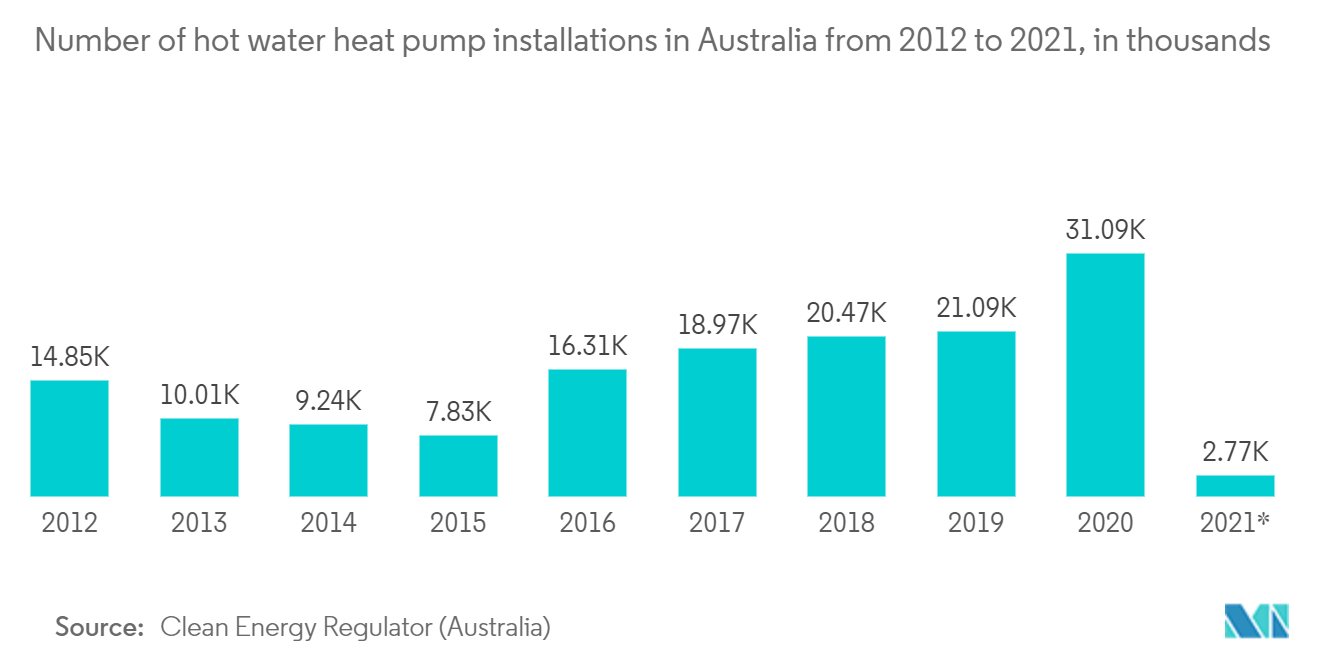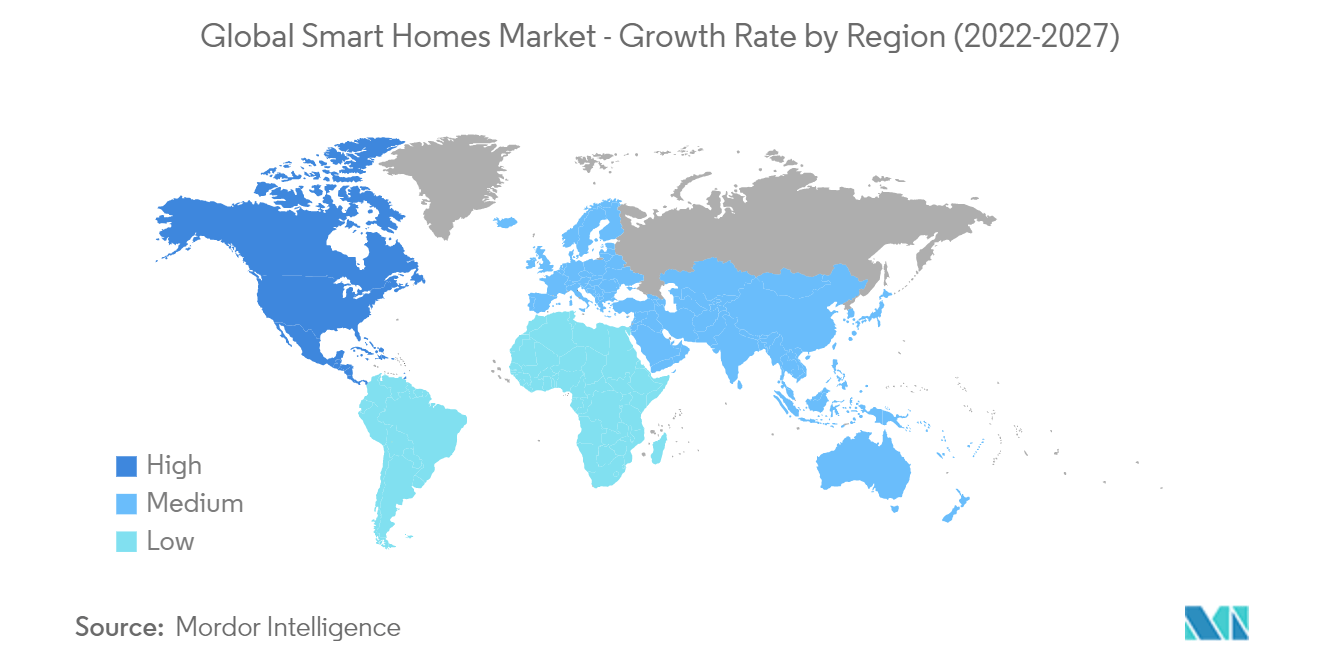Market Trends of Smart Homes Industry
HVAC Systems are Among the Most Significant Contributors to the Market
According to a report from the US National Academy of Sciences (NAS), the first decade of the 21st century was 0.8°C (1.4°F) warmer than the first decade of the 20th century. The variation in climatic changes has led to the increasing demand for electrical cooling systems in summers and, simultaneously, for natural gas, heating oil, wood, and electrical heating systems in winters.
With the advent of new government regulations regarding efficiency, the usage of HVAC systems is expected to rise. This has opened a gateway to the smart HVAC control systems for the most advanced heating and air conditioning units in buildings. Thus, the already existing HVAC equipment would have to be either replaced or retrofitted to adjust the energy efficiency as per the government standards. This would drive the need for HVAC retrofitting, thereby augmenting the overall market's growth positively.
Proper airflow will also help in humidity control. If the buildings maintain a relative humidity of 40%-60% inside, this will decrease the virus's ability to infect occupants. If the HVAC system incorporates makeup air, it also will increase ventilation, thus creating an even more healthy environment. In multiple commercial HVAC systems, filters are measured in MERV (minimum efficiency reporting values).
Moreover, reducing IoT sensor costs is also expected to result in OEMs offering products for a more competitive and lower price, which could indirectly impact the HVAC equipment market. Green HVAC systems are being developed to bring down costs and improve energy efficiency.
Starting from 2023, all new residential central air-source heat pump systems sold in the United States are expected to meet new minimum energy efficiency regulations and standards. The latest minimum energy efficiency standards for these equipment types went into effect in 2015. The new regulations require an increase in the heating efficiency of all air-source heat pumps.

North America Holds the Major Share of the Market
Smart homes are on the rise, with nearly 30 million US households projected to add smart home technology in the near future. The products consumers are looking to add to their homes include connected cameras (highest demand), video doorbells (second-highest demand), connected light bulbs, smart locks, and smart speakers.
According to the US Department of Energy, the buildings sector accounted for about 76% of the electricity used, resulting in a considerable amount of associated greenhouse gas (GHG) emissions, thereby making it necessary to reduce energy consumption in buildings to comply with the national energy and environmental challenges and decrease costs to building owners and tenants.
According to the New York State Energy Research and Development Authority (NYSERDA), enabling smart technologies and real-time energy management systems can decrease costs by an average of 15% and improve the bottom line by creating an ecosystem that reduces energy waste.
Moreover, with the COVID-19 impact, multiple energy management software providers extend their services beyond energy management systems by building health assessment solutions. One such example is Honeywell, which launched an integrated set of solutions to help building owners improve the health of their building environments, along with energy efficiency. These solutions further help building owners operate more cleanly and safely and also comply with social distancing policies.
Other innovations have also led the market in the region. For instance, in February 2021, Aspinity announced the availability of its Acoustic Event Detection Kit (EVK1) for battery-operated, smart home devices that are always listening for acoustic triggers, such as window glass breaks or other acoustic events. The kit features the company's analogML core, a fully analog machine learning processor that promotes system power efficiency by identifying specific acoustic events before data digitization.


